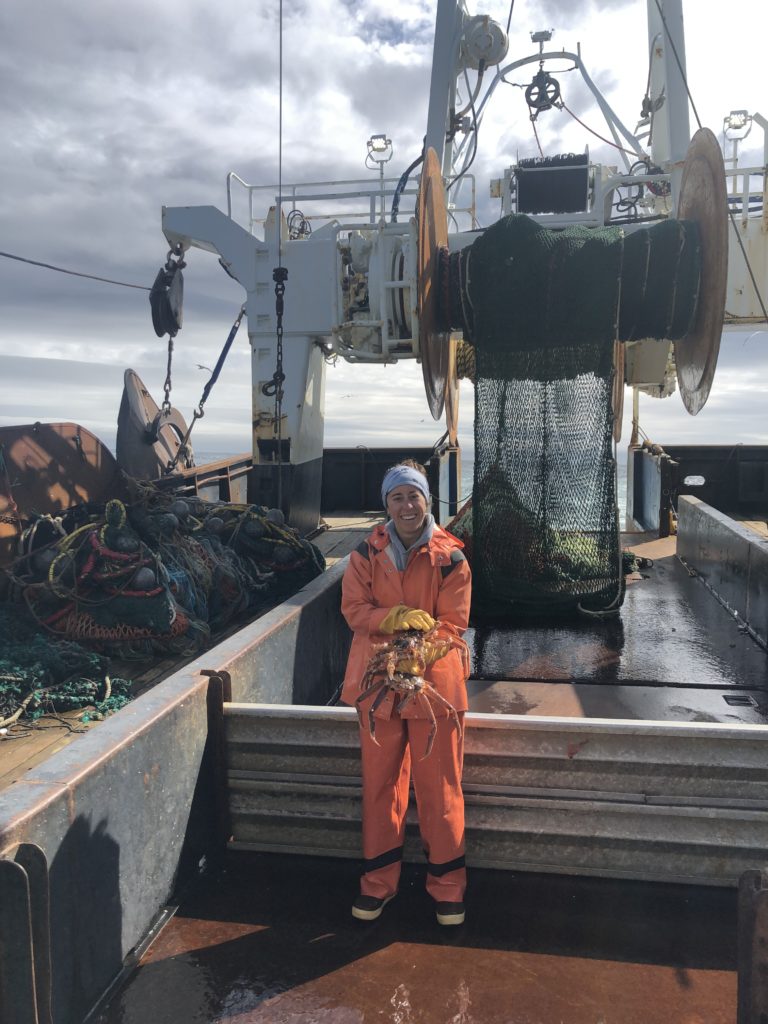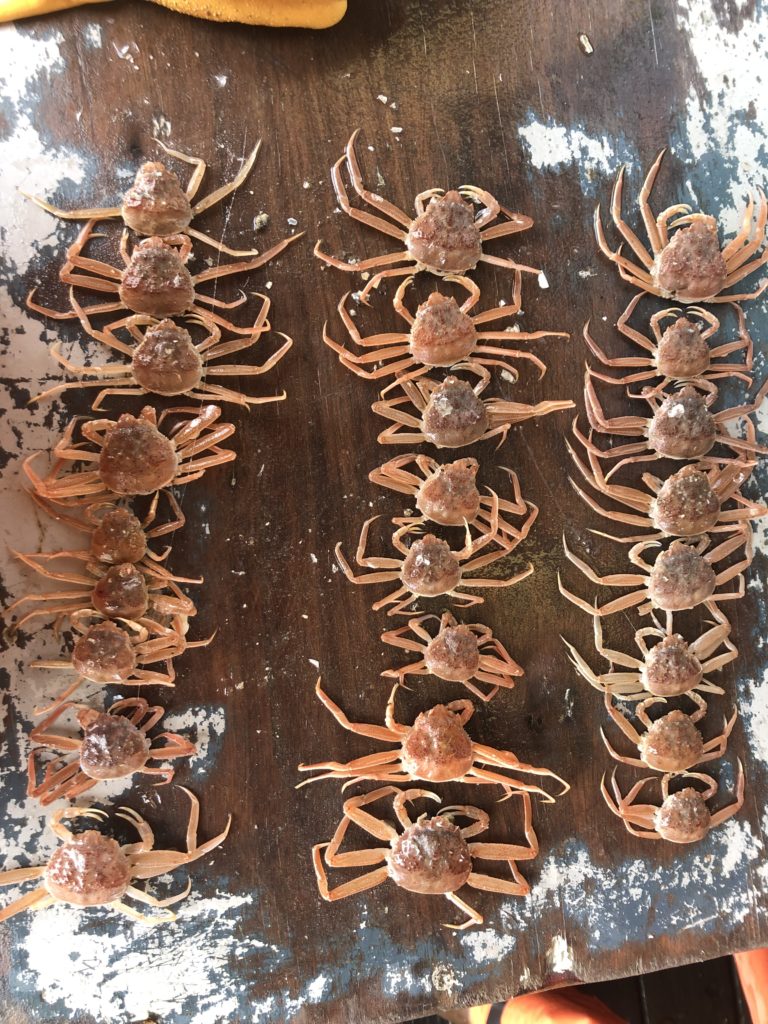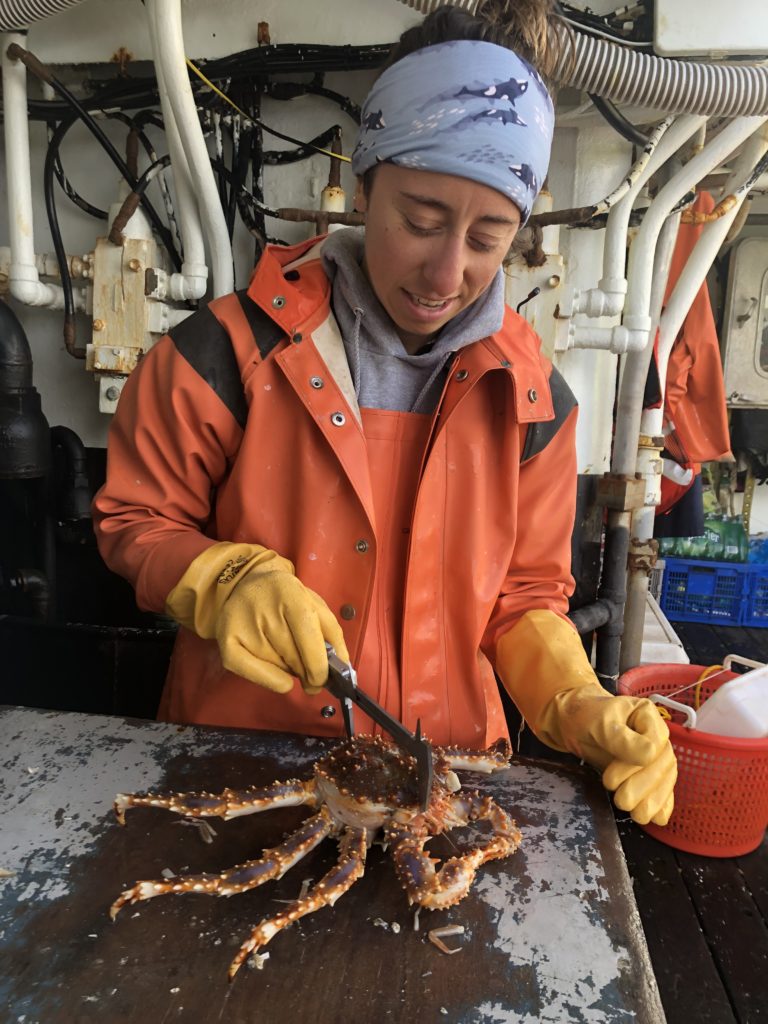
Azura biological technicians participated in NOAA’s annual trawl surveys in the Bering Sea this spring and summer. These surveys are part of NOAA’s Groundfish Assessment Program which assesses the condition of groundfish and shellfish stocks in Alaskan marine waters.
The data collected from the trawl surveys are used to determine the distribution and abundance of Alaska groundfish resources and understand fish and crab habitat use.
One of our biological technicians, Joletta Silva, provides a glimpse of her experience on these surveys...
Hello from the Bering Sea! My name is Joletta Silva, and I am a biological technician working with the Alaska Fisheries Science Center in Kodiak, Alaska. Part of my position involves participating in the annual Research Assessment and Conservation Engineering (RACE) trawl surveys in the Bering Sea. This year I will be at sea for two legs from July 10-August 25th. I am on a contracted commercial trawl fishing vessel, and we spend our days sampling and assessing everything that we catch in the trawls. Here’s a brief account of a typical day on this survey.
I wake up at 7 am to the purring of the motors dropping the trawl into the water. I know I have 30 minutes before the trawl comes up and our work begins. When the trawl comes up, it gets emptied onto a large sorting table, and the scientists and crew sort the entirety of the catch by species from large cod to the tiny bryozoans. It is quite a process! We weigh everything once it is sorted, and then we break into different groups to begin the more detailed sampling projects. I am in charge of the crab portion. We weigh and sample all commercially viable crab (snow crab, king crab, and tanner crab) caught. Generally, we record carapace width and maturity data from as many crabs as possible. After the sampling is completed, everything is returned to the ocean, the trawl goes back into the water, and this process is repeated 4-5 times daily.
The days at sea can be pretty long, and weather conditions are variable. I work over 10 hours each day. These long days help make the time go faster, and provide a distraction to the monotony of boat life. It is definitely fun to be out on deck, and I have been seeing a lot of new species and helping out with the groundfish projects such as otolith and stomach collection and liver analysis. We have also been completing some crab special projects, including hepatopancreas dissections and shell condition comparisons.
Three days a week the data are sent to an analyst in Kodiak who will contribute these numbers to help determine the quota for the upcoming crab season. It is definitely interesting to see how our data will impact the fishing this year.
We are currently on our way to Nome, and I am definitely looking forward to some land time and a little break before we head out on the last leg of the survey. From Nome we complete the Northern Bering Sea survey and then will head back down south to Dutch Harbor to end the survey. So far all is going well, our team works well and efficiently together, and we also manage to have some fun on the side. We are currently planning a Bering Sea Olympics and have been playing a lot of cribbage! I hope everyone is enjoying their summer back on the mainland!
Photo Credit: NOAA Fisheries
This article has been approved for posting by NOAA Fisheries.




